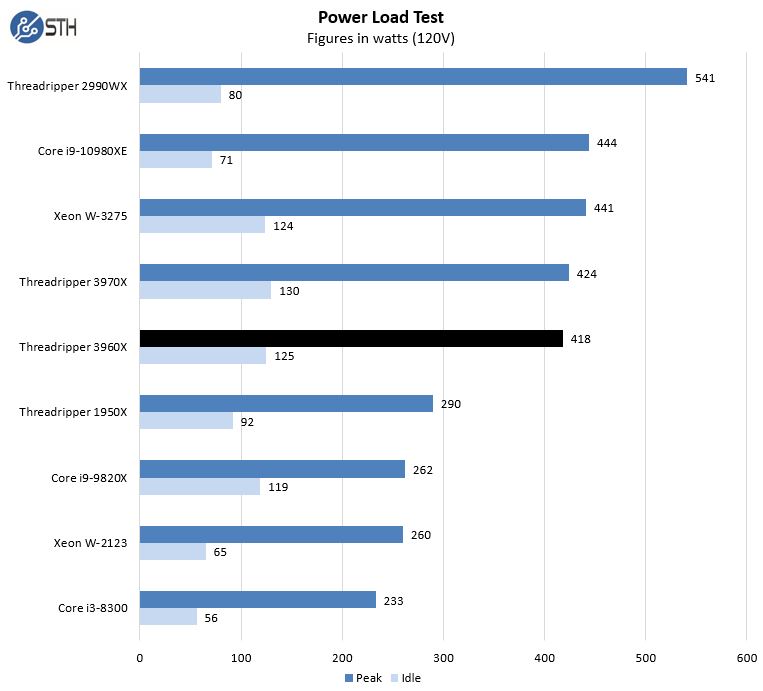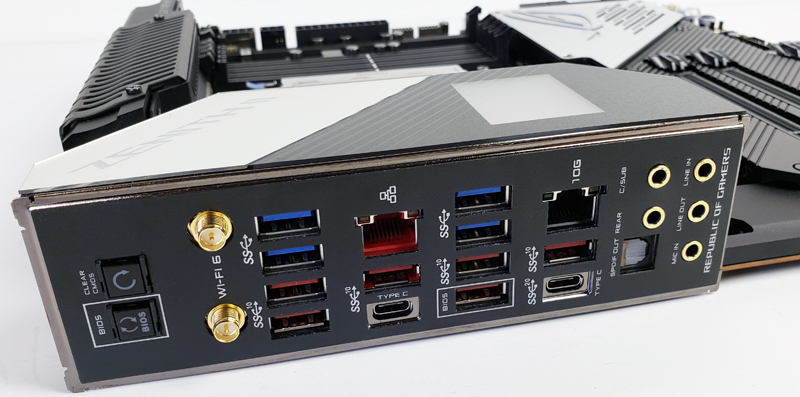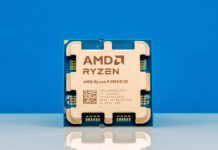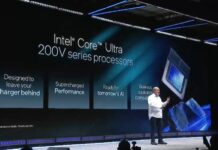AMD Ryzen Threadripper 3960X Power Consumption
Power consumption can vary a significant amount depending on processors used and the number of HDDs/SSDs/Expansion cards used. Here we test just a primary system. We test with the same graphics card and NVMe SSD in all our tests. Power is measured at the wall and the graphics card and SSD were not stress tested.

For our tests, we use the AIDA64 Stress test which allows us to stress all aspects of the system. As you can see, we are getting similar power readings between the 3970X and 3960X. This is somewhat like we saw with the AMD EPYC 7642 48-core part and some of the 64-core parts. More cores usually help, but there are practical packaging and silicon-level constraints for AMD still.
AMD Ryzen Threadripper 3960X Market Positioning
Thes chips are not released in a vacuum instead, they have competition on both the Intel and AMD sides. When you purchase a server and select a CPU, it is important to see the value of a platform versus its competitors.
AMD Ryzen Threadripper 3960X v. AMD Alternatives
This is perhaps going to be one of the more controversial sections we have on STH. The Threadripper 3960X sits in a position between the Ryzen 3950, a 16-core part, and the Threadripper 3970X, a 32-core part in AMD’s stack. AMD has other CPUs, however, at this end of the market, realistically those are the main competitors.
The Ryzen Threadripper 3970X has more cores and costs around $600 more. If you have an application that can utilize 32 cores and 64 threads, then it is likely worthwhile. The platform is otherwise the same, so this comes down to whether those extra eight cores can be used and are worth $600 to the user. If those conditions are met, the 3970X is the way to go. If not, the 3960X is a lot of CPU.

If you have a per-core licensed software in your mix, then the 3960X can offer more performance on a per-core basis. $600 for the hardware can cost tens of thousands on the software side. As we saw, the 3970X gets power limited which means the 3960X tends to do a bit better on a per-core metric even if it is not as fast on a nominal basis.
The controversial part is that in this market, the Ryzen 3950X is not really a competitor. In 1DPC mode for the fastest memory access, one can only get 64GB of RAM in that platform (or 128GB in 4x 32GB) which can be very limiting. The Ryzen 3950X also provides a significantly less robust platform in terms of PCIe Gen4 connectivity. This is not to say that the Ryzen 3950X is not a great platform for many. Instead, it is in a market that historically stems from single and dual Xeon workstations, Threadripper is a more suitable alternative.

Those that need more PCIe connectivity will see Threadripper’s additional lanes as a binary suitable/ not suitable factor. Those that need more than 128GB (or even at 128GB) of RAM will see the Threadripper as the only viable alternative. This is a controversial opinion in many circles, but if you need the PCIe connectivity, more cores, more memory bandwidth, and capacity, then the Threadripper 3960X has features that allow it to enter solutions the 3950X simply does not have the specs for.
AMD Ryzen Threadripper 3960X v. Intel Alternatives
The Threadripper 3960X v. Intel is a more nuanced story. There are two, or three alternatives that are squarely competitive, but the features lack direct alignment.
First, the Intel Core i9-10980XE is an 18-core part that is great in its own way. It lacks the same PCIe connectivity as Threadripper and lacks the core count. What it does have is Intel’s newer features like AVX-512. It still has quad-channel memory. One other aspect is that X299 is a mature platform and the motherboards can be less expensive. Combine that with the $400 lower price tag and one can make a strong argument that it is priced correctly as a part below the Threadripper 3960X.

There is a Xeon W-2295 which is very similar to the i9-10980XE except it has ECC RDIMM support. That allows up to 1TB of memory or around 4x what the Threadripper platform can handle. If one needs more than 256GB of memory, then Intel has a more suitable platform.
The other major competitor is the Intel Xeon W-3275. That seems a bit strange since it is a $4449 part or over $3000 more expensive. Key differentiators again are the Intel instruction set with AVX-512 and VNNI along with ECC RDIMM support for higher memory capacities. In contrast, the Threadripper 3960X is less expensive and offers PCIe Gen4 connectivity.

Looking at the Threadripper 3960X compared to older dual Xeon E5 V1 to V4 systems, this is an enormous jump forward. PCIe Gen4 enables faster devices. New platforms for Threadripper that support newer USB 3 and Type-C connectivity feel more modern than older systems. For example, most modern mirrorless/ DSLR cameras are utilizing USB Type-C connectivity which the Threadripper platforms all support. Likewise, newer platforms we have reviewed have features like Bluetooth and Wi-Fi 6. On the Core i9 side and even with the Xeon W-3275 one can see these features. On the Xeon E5 series platforms, USB 3 connectivity and Wi-Fi/ Bluetooth were not as prevalent. Threadripper platforms feel like a modern platform from a user experience perspective. While dual Xeon E5 platforms use twice as many NUMA nodes to get to 24 cores, they also have more memory channels and capacity so there are tradeoffs to be made.
If AMD supported ECC RDIMMs on Threadripper, and 1TB memory capacities, Intel’s advantage would be very small. You can read Patrick’s Analysis of Our Q4 2019 HEDT Processor Reviews where he goes into this more.
Final Words
This is a $1400 CPU, but frankly, that is fine. These are not CPUs designed to be paired with 16GB of memory a 128GB SSD, and a low-end GPU. Instead, these are chips designed for systems that will cost more than $3000. Even a single NVIDIA Titan RTX costs significantly more. If the Threadripper 3960X supported ECC RDIMMs, undoubtedly the average system price would rise. That is a feature we are missing.
Performance-wise, the AMD Ryzen Threadripper 3960X is excellent. The top-tier performance is certainly something that users in this market want to see and will see with the new AMD chip. The story goes beyond just the CPU performance. If you see our platform reviews such as the ASUS ROG Zenith II Extreme Review and MSI Creator TRX40 Review you will see the impacts of plenty of PCIe lanes, DIMM channels, and PCIe Gen4. Next-generation PCIe Gen4, in solid quantity, is something that Intel simply cannot offer today and that is important if you want to use Gen4 storage and networking.
Overall, we think that the AMD Ryzen Threadrupper 3960X strikes a great balance between providing plenty of cores along with great single-core and real-world performance at a relatively reasonable price.




I’m hoping they’ll make RDIMMs available for the higher core count Threadrippers. I believe that the 32GB UDIMMs max out at 2666 mHz, so if you want 3200 you’re limited to 128GB. That’s not a lot to feed 128 vcores.
Ryan, have you encountered SCALEMP?
They are the OEM of Intel Optane RAM impersonation drivers.
Grab the most consistently low latency drive you can and go.
Would be great if you can test some of W-22xx family too. I’m most curious if their 165W TDP is a real thing as is in case of TR (which is on 280W these days) or this is just Intel and things go way up over that limit too like i9.
Hi KarelG – we are working on that.
Fully vetted/certified ECC(All Kinds) support is maybe not going to be provided for TR/Consumer parts by AMD/Motherboard makers and most of the Pro Software packages that really need either Epyc/Xeon branded parts.
If AMD creates a Pro Threadripper/MB True Workstation Branding it’s going to have to cost similar to the 7H02 series parts and AMD’s EEE division that’s currently over Epyc/Professional systems will not want any product segment cannibalization. That said if the TR 3000 series 48 and 64 core parts were limited to say 6 memory channels max and some more limited PCIe 4.0 lane counts compared to Epyc/SP3 then maybe that could be offered, but that’s without the full ECC memory types support where AMD/MB vendors spend extra on the proper CPU/MB certification/vetting process that does not come cheaply.
In not very many more business quarters AMD’s Epyc CPU/Pro GPU Accelerator sales will begin the process of dwarfing AMD’s consumer divisions in the revenue category and AMD’s golden cow will most certainly come from Professional Compute/AI and Server/HPC market revenues where the margins are there and most will pay and write that expense down on their taxes. AMD will have to be more like Intel in that regard in order for AMD to get the revenue stream going to compete with Intel longer term. So AMD has to push its gross margins ever higher or Intel will eat them on the R&D investment side.
It’s just too unfeasible for AMD/Pro MB partners to pack the full Professional feature sets into any consumer branded/priced parts and lose that needed gross margin and revenue growth that’s necessary to compete with the giant Intel empire. AMD maybe has another 2 years at most to get its market cap and revenues high enough to fend off Intel after that time frame expires and Intel’s proper reply has been fielded. AMD really needs to remain as active as a garden shrew on the R&D side of things and that’s going to need higher margins to fund.
@DiscoShrewzRevenuez
With its current product lineup, AMD is leaving a couple of gaps open, for Intel to have SKUs that have no direct competitor.
The first is the strange decision to not have a 16 core TR 3000 part. AMD claims that TR demand is top heavy, but still. This leaves open a gap for the 14 and 18 core X299 parts to fit in, for those who need more memory capacity, more memory bandwidth or more PCI-E lanes than what AM4 can provide.
The second, IMO more significant oversight is not competing with the Xeon-W lineup, which brings both high clockspeeds and tons of ECC RAM to the table, *at the same time*.
EPYC cannot compete with Xeon-W, because there are no frequency-optimized Rome parts.
TR cannot compete because it does not support ECC (L)RDIMMs.
Maybe the rumored TRX80 platform will be the Xeon-W competitor? With 8 channels of (L)RDIMMs?
@Anon: I somewhat agree about your first point – I got a TR1920X as a cheap entry into a terrific platform (little did I know that it will taken behind the barn and shot at first chance). But it’s much less important than your second point, that I totally agree with.
Even if they put out a higher tier TR with 8 channel RDIMM support as is rumored, they are in a tight spot. It’s really disqueting to see how quickly AMD adopts Intel’s artificial segmentation behavior once they are in the lead. In my opinion, the current TR3 platform doesn’t offer substantial advantages over the first TR platform but the price is huge (at least in terms of mindshare) – breaking compatibility. It should have had 96 PCIe lanes and 4 channel RDIMM support. Then it would have covered much wider set of use cases and would have provided real justification for the compatibility break. Now it’s just “meh” (with a lousy fan on top – I’m talking about the chipset obviously) while leaving a big market gap open.
BTW, I guess it’s not too late for AMD to offer frequency optimized Epyc. That would seal the gap from above.
Would be great if you could run the STH Linux benchmarks, especially the Kernel Builds per Hour.
Here we’re running lots of cross compilings to build embedded Kernels: Buildroot, Xilinx toolchain, Android toolchain, among others, make intensive use of X86 processors. Android build can last 3 hours on the Skylake family processors, even with a SSD. What can we expect from Threadripper ?
CyrIng – This is on page 5 of the review.
I really was hoping to hear more about the WRX80 Chipset for the TR3 by now. I would love to see a more Workstation oriented Chipset/Motherboard for the TR3. A Motherboard with express support for ECC Ram and also a few more PCIe slots and supports all TR3 chips.